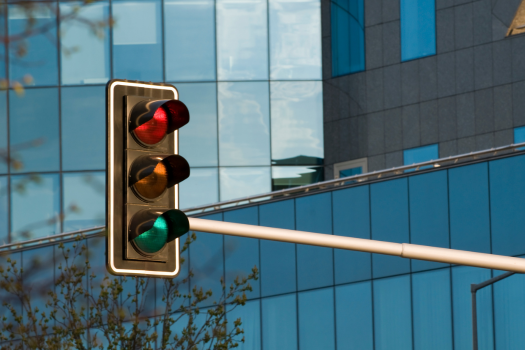Traffic cameras play an important role in monitoring roadways throughout California, helping to enforce traffic laws, and providing key evidence in car accident cases. At Roberts Personal Injury & Car Accident Lawyers, we believe in keeping our community informed and making sure that everyone understands exactly how traffic camera footage works. Whether you’re involved in an accident or simply want to know how these cameras operate, understanding how traffic footage is recorded, stored, and accessed can be an important part of protecting your legal interests. This article will provide an in-depth look at traffic cameras in California, their recording practices, and how you can obtain footage if needed.
Do Traffic Cameras Record 24/7?
One of the most common misconceptions is that all traffic cameras continuously record video footage at all hours of the day. In reality, this depends on the type of traffic camera and its specific function. The main types of traffic cameras in California include:

- Red-Light Cameras – Red-light cameras are installed at intersections to capture images of vehicles that run red lights. These cameras do not continuously record video but instead take high-resolution photographs when a vehicle triggers the sensor by crossing the intersection when a red light is active.
- Speed Cameras – While California does not have widespread speed enforcement cameras, pilot programs in select areas aim to test their effectiveness. These cameras function similarly to red-light cameras, capturing images when a vehicle exceeds a preset speed limit.
- Live Traffic Cameras – CalTrans (California Department of Transportation) operates live traffic cameras along major highways and roadways. These cameras provide real-time footage for traffic monitoring but typically do not record or store video footage for review in the future.
Surveillance Cameras at Intersections – Some intersections may have government- or city-installed surveillance cameras that record video, but storage policies vary per city. Unlike red-light cameras, these cameras might provide continuous video footage, and store it, depending on local regulations.
How to Obtain Traffic Camera Footage in California
If you believe traffic camera footage can help your case, obtaining it quickly is essential. Here’s how you can go about it:
- Identify the Camera Owner
- Traffic cameras are owned and operated by different entities, including:
- Caltrans (for freeway cameras)
- Local governments (for red-light and surveillance cameras)
- Businesses or private properties (for security cameras)
- Traffic cameras are owned and operated by different entities, including:
- Request Footage from the Appropriate Authority
- If the footage belongs to a government agency, you may need to file a formal Public Records Request to obtain the video. However, agencies are not always required to provide footage unless there is a legal basis for the request, such as a subpoena.
- For private businesses or homeowners, you will need to contact them directly and request a copy of the footage.
- Work with a Personal Injury Attorney
- Traffic camera footage can be crucial in proving liability in a car accident case. A personal injury attorney from our firm can send legal requests, such as subpoenas, to ensure traffic camera footage is preserved and obtained before it is deleted.
The Importance of Traffic Camera Footage in California Car Accident Cases
Traffic camera footage can serve as key evidence in a personal injury claim. It can help:
- Prove Fault – Traffic camera footage can clearly show which driver violated traffic laws.
- Counter False Claims – If the at-fault party tries to dispute liability, traffic camera footage can disprove their statements.
- Support Insurance Claims – Traffic camera footage in California can be used as evidence to strengthen your claim when negotiating with insurance companies.
- Assist in Hit-and-Run Cases – Some cameras capture license plate numbers, helping authorities identify the responsible driver.
What If No Traffic Camera Footage Is Available?
If traffic camera footage is unavailable, there are alternative ways to gather evidence:
- Witness Statements – Testimonies from people who saw the accident can help support your case.
- Dash Cam Footage – Many drivers now use dash cameras that continuously record road activity.
- Surveillance Cameras from Nearby Businesses – Stores, gas stations, or homes near the accident scene may have captured useful footage.
- Accident Reports – Police reports contain critical details that can help establish liability.
Need Help Obtaining Traffic Camera Footage In California?
Traffic camera footage in California can be a valuable asset when pursuing a car accident claim, especially in cases involving violations of the California cell phone law 2025. These laws have become stricter, and using a cell phone while driving could result in serious penalties. Understanding how traffic cameras capture footage and how long it’s stored is essential if you believe it could support your case.
At Roberts Personal Injury & Car Accident Lawyers, we have experience helping accident victims gather evidence, negotiate with insurance companies, and fight for the compensation they deserve. If you need legal assistance, contact us today for a free consultation.

